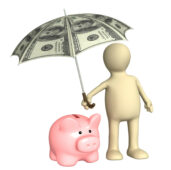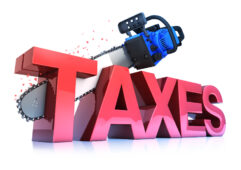Over the last few years, a new breed of mutual fund has become accessible to investors seeking asset diversification and mitigation of the problems with mutual funds, such as high expenses. These funds, called exchange-traded funds (ETFs), trade on the major exchanges and behave similar to individual shares, except that they offer diversification and expert management accessible in conventional mutual funds. Well over one thousand different exchange-traded funds at the moment are available, and the number is continuing to expand.
ETFs can be useful for investors seeking to seize capital losses at year-end. For a hypothetical example, assume that you have stock in a particular silicon-chip manufacturing company. The stock price has dropped precipitously, however you feel this is only momentary. Nevertheless, you want to realize a capital loss for the tax benefit on the stock while it's trading in its present range. But you should be careful for the 'wash sale' rule as dictated by the IRS prohibiting the repurchase of any stock sold for a loss for a minimum of 31 days following the sale. As a result, a solution could be to market the stock and buy shares of the suitable corresponding exchange-traded technology fund. Even if this fund really has your previous stock as one of its core holdings, it is nonetheless considered a separate security by the IRS and the SEC. Therefore, the wash sale rules will not apply - a nice tax relief. Furthermore, you have diversification within the technology field, while retaining exactly the same liquidity as before.
And when is it best to sell an individual stock and buy the ETF representing the asset class to which the stock belongs? The evident answer is when you have capital gains or any other income and taking a loss would assist to shelter that income. You can use capital losses to offset any capital gains plus and additional $3,000 to shelter ordinary income. This is a tax benefit that every investor should use every year.
The other tax relief that arrives along with ETFs accrues from low portfolio low turn over. Simply because most ETFs aim to replicate an index instead of beat it, the ETF doesn't need to do a lot of buying and selling as most actively managed mutual funds do. The low-level of purchasing and selling results in low capital gains and the resulting taxes-another nice tax relief of ETFs.
You Pay More Taxes Than Necessary
And we guarantee your CPA has never told you The problem with paying taxes is that most people overpay. So if you are concerned about having enough in retirement, you must stop overpaying taxes. I know you think your CPA takes care of this for you. WRONG. I AM a CPA (retired) and I can tell you that 90% of CPAs do nothing more than enter your information into the little boxes on the tax return but NEVER tell you how to pay less next year. Why? Many of them simply do not know what we can show you. In ten minutes.Get Your Copy Now - 6 Ways to Cut Retirement Taxes





Leave a Reply